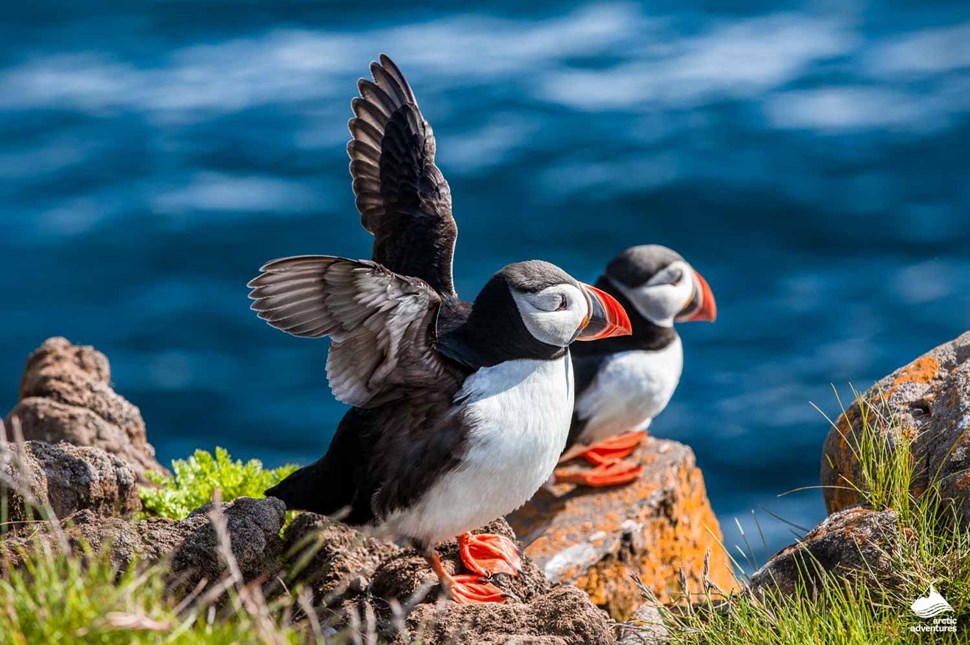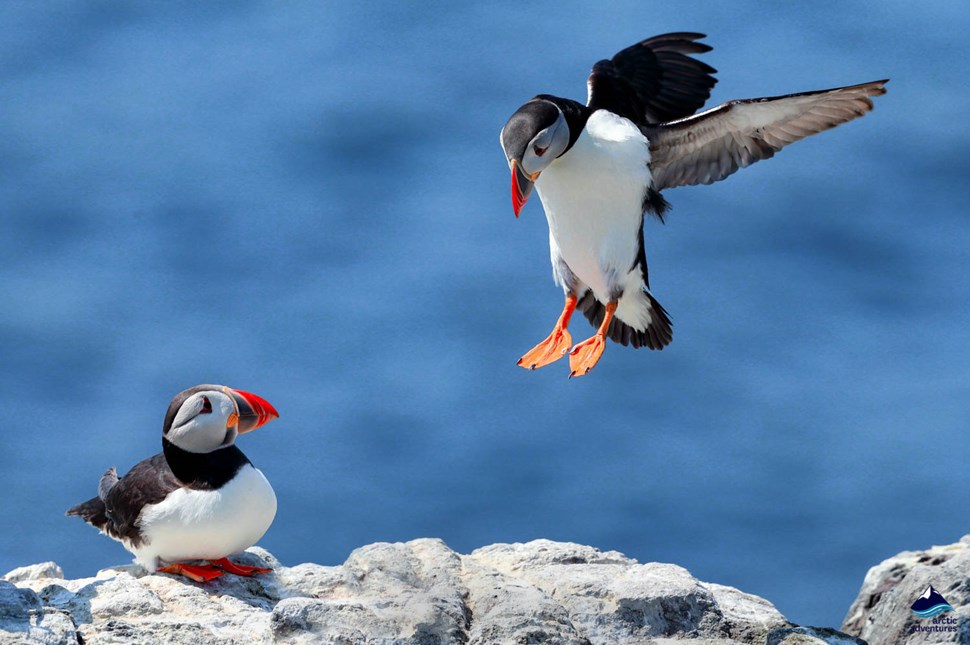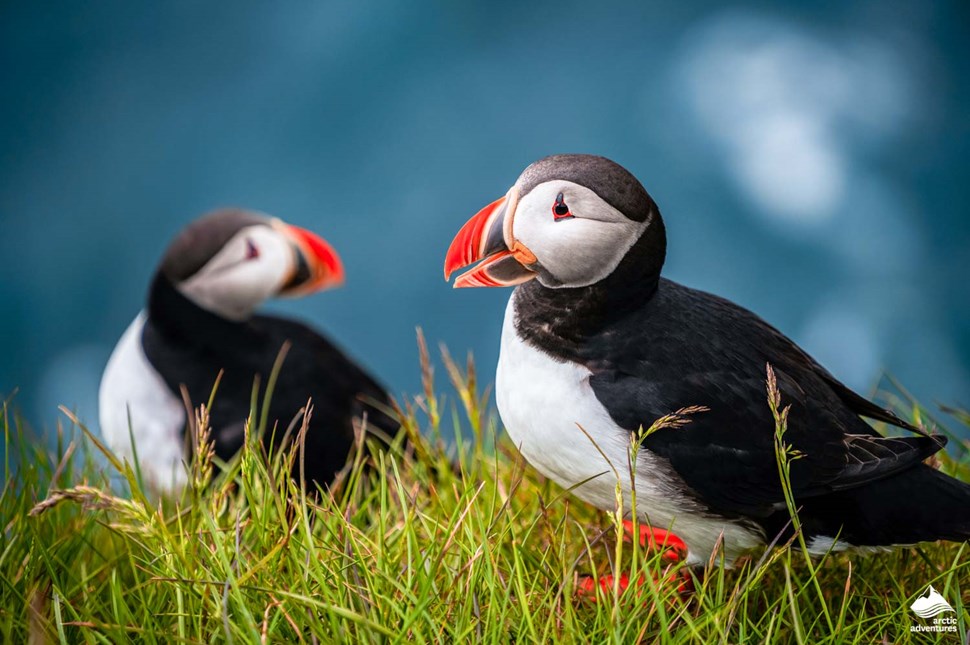Iceland is open for travel. Check volcano updates here
Puffin tours are only open for the migratory season from May to August, so be sure to book your spot early! Watch puffins in their natural habitat and combine your tour with other activities for a full day of entertainment!
If you’re wondering if there are puffins in Iceland, the answer is yes! Iceland is the breeding ground for around 60% of the world’s Atlantic puffin population. The birds spend most of their time at sea, but they return to land during spring and summer. They form large breeding colonies and nest on land from May to late August.

Puffins are great swimmers and divers. They can dive up to 60 meters (200 ft)! They’re able to stay underwater for up to a minute and can fit more than 10 fish in their beak at a time! These cute birds are also fast, reaching speeds of 80kmh (50mph).
While puffins look like miniature versions of penguins with colorful beaks, the sound they make doesn’t resemble any other animal. Their growling sounds like a muffled chainsaw!
Atlantic puffins are famously monogamous. Most puffins spend their lives with one mate and couples normally go to the same nesting place every year. Once the female puffin lays an egg, female and male puffins take turns caring for the egg and, later, for the baby puffin, also called a puffling.

Looking for the best place to see puffins? Iceland offers plenty of puffin watching opportunities! Wherever you are in the country, you’re never far from one of our puffin watching tours.
We operate expeditions from Reykjavik that take you to “Puffin Island”, home to more than 30,000 of these charming creatures! Just off Reykjavik’s old harbor, the boat tour allows you to see the city from a whole new angle.
If you’re traveling on the northern part of Iceland, join one of our puffin watching tours from Dalvik. From here, you can combine puffin watching and whale watching near Hrísey Island for the perfect day tour.
Looking for even more adventures? Cross the Arctic Circle and visit Iceland’s northernmost point! Grímsey Island is home to a plethora of different seabirds, including puffins. Get your binoculars ready!
You can see puffins on the South Coast, too! Join one of our bird watching tours from Ingolfshofdi Hut in the Icelandic countryside. Cape Ingolfshofdi lies between Skaftafell in Vatnajokull National Park and the famous Jökulsárlón Glacier Lagoon. Thousands of puffins nest in the cliffs in the summertime, making it a great spot to spot these cute seabirds.

Puffins spend most of their time out at sea. For about eight months a year, the birds rest on waves and only come to shore to nest and raise their pufflings.
While puffins are out at sea, it’s difficult to spot them. They spread out widely across the Atlantic Ocean. One bird gets more than a square kilometer for itself (0.4mi²), so you’ll never see a group of puffins on the sea.
Your best chances of spotting a colony of puffins in Iceland are in summer, from May to August. The birds are most active in the evenings. Some of their favorite spots in the country include Látrabjarg cliffs in the Westfjords of Iceland and Papey Island in East Iceland.
But large colonies of these charming seabirds live all along the Icelandic coast. If you’re hoping to see puffins from Reykjavik, you’ll be able to spot them just a short sail away from the old harbor!

There are rumors going around saying that Icelanders eat puffins. In reality, not many Icelanders have tried it, and it’s certainly not part of their daily diet. But if you have a lust for a cooked puffin, some restaurants have it on their menus.
Most of the restaurants that have puffins on their menus, offer smoked or boiled birds. People say that depending on the way it’s prepared, puffin meat can taste like pastrami or liver, or have a fishy aftertaste.